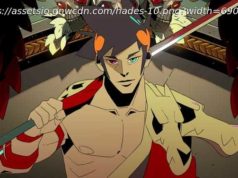The MCU’s latest villains are ready to cause havoc for Sam and Bucky – but who are they exactly?
Spoilers for The Falcon and the Winter Soldier follow. The Falcon and the Winter Soldier has finally arrived on Disney Plus. If episode 1 is anything to go by, Sam Wilson and James ‘Bucky’ Barnes will certainly have their hands full this season. One of the threats facing the duo this year is a group called the Flag Smashers, and it looks like they mean business – the group is ideologically opposed to the idea of national borders in the post-Thanos world of the MCU. If you want to know more about the Flag Smashers, including their comic book history and how they’ll tie into The Falcon and the Winter Soldier’s plot, we’ve got you covered. There are mild spoilers for episode 1 from here on out, so proceed at your own risk. Final spoiler warning for episode 1. Turn back now if you haven’t watched it yet. While the Flag Smashers are a group of terrorists in the Disney Plus TV show, Flag Smasher is actually a solitary supervillain in Marvel comics. Flag Smasher first appeared in Captain America #312 in December 1985. Created by writer Mark Gruenwald and artist Paul Neary, Flag Smasher was a terrorist who used anti-American rhetoric and actions to spread panic across the US. A gifted hand-to-hand combatant, Flag Smasher is also a master strategist and fluent in seven languages. Flag Smasher is also the founder and self-installed Supreme Commander of the terrorist group called Ultimatum, which may be the group that The Falcon and the Winter Soldier’s Flag Smashers are based on. There have been two incarnations of Flag Smasher in the comics. The first was Karl Morgenthau, who was the son of a wealthy Swiss banker-turned-diplomat. After his father is killed during a riot in the fictional Marvel city of Latveria, Karl vows to bring an end to the concept of nationalism.






